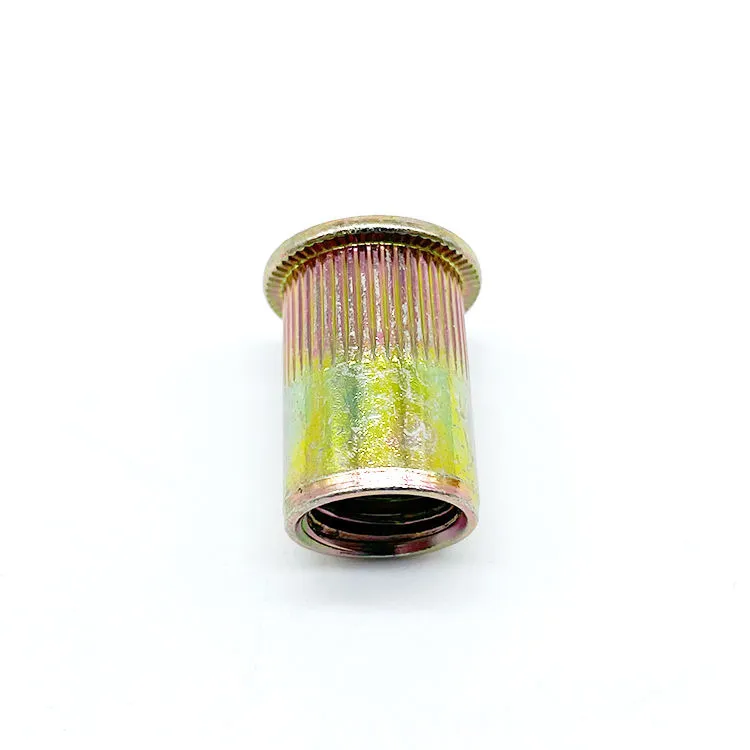

self tapping screws for steel lintel - a fastener
Dic . 22, 2024 06:50 Back to list
self tapping screws for steel lintel - a fastener
Self-Tapping Screws for Steel Lintel A Fastener Revolution
In the world of construction and engineering, fasteners play an essential role in ensuring the structural integrity and longevity of buildings. Among these myriad fastener types, self-tapping screws stand out for their versatility and efficiency, particularly when used with steel lintels. In this article, we will explore the benefits and applications of self-tapping screws for steel lintels, shedding light on why they are considered a revolutionary choice in modern construction.
What are Steel Lintels?
Steel lintels are horizontal supports placed above openings such as doors and windows, designed to carry the load of the structure above. They are crucial for maintaining the stability and safety of a building. With their robust design and durability, steel lintels are preferred in various construction projects, from residential homes to commercial buildings.
The Role of Self-Tapping Screws
Self-tapping screws are a type of fastener that can create their own hole in the material they are driven into. This property simplifies the assembly process, especially when fastening materials that may not be easy to pre-drill, such as steel. They come with a sharp tip that allows them to penetrate tough materials like steel lintels with ease, making them an ideal choice for construction applications.
Advantages of Using Self-Tapping Screws with Steel Lintels
1. Time Efficiency One of the most significant advantages of using self-tapping screws is the time saved during installation. Traditional methods often require pre-drilling holes, which can be time-consuming. Self-tapping screws eliminate this step, allowing for quicker assembly and reduced labor costs.
self tapping screws for steel lintel - a fastener

2. Strong Connection Self-tapping screws are designed to create a tight fit as they are driven into the material. This ensures a strong connection between the components, which is vital when securing steel lintels. A secure attachment reduces the risk of structural failure over time.
3. Versatility Self-tapping screws come in various lengths and diameters, making them suitable for different applications. Whether you are working with thinner gauge steel or heavier sections, there is a self-tapping screw designed to fit the engineering requirements of your project.
4. Reduced Risk of Damage When using self-tapping screws, there is a lower risk of damaging the steel lintel compared to other fastening methods. Their design minimizes stress on the material, which helps maintain the integrity of the lintel and ensures its longevity.
5. Ease of Removal and Reusability In scenarios where adjustments or repairs are necessary, self-tapping screws can be removed and reused with relative ease, unlike welded connections, which can be more complicated and time-consuming to dismantle.
Considerations When Using Self-Tapping Screws
While self-tapping screws offer numerous advantages, it’s essential to choose the right type for the job. Factors such as the thickness of the steel, the load-bearing requirements, and the environmental conditions should all be considered when selecting the appropriate screw. Additionally, using a high-quality screw made from durable materials can further enhance performance and longevity.
Conclusion
Self-tapping screws have revolutionized the way fasteners are used in construction, particularly with steel lintels. Their ability to create secure, lasting connections without the need for pre-drilling saves time and improves efficiency on the job site. As construction practices evolve to meet increasing demands for speed and reliability, self-tapping screws will undoubtedly continue to play a crucial role in the building process. Innovators in construction materials and fasteners are always on the lookout for solutions that improve safety and efficiency; self-tapping screws for steel lintels provide just that, making them a choice that builders can rely upon for their next project.
Latest news
-
Best Self Tapping Screws for Drywall - Fast & Secure Installation
NewsJul.31,2025
-
High-Strength Hot Dip Galvanized Bolts-Hebei Longze|Corrosion Resistance&Customization
NewsJul.31,2025
-
Hot Dip Galvanized Bolts-Hebei Longze Metal Products|Corrosion Resistance&High Strength
NewsJul.31,2025
-
Hot Dip Galvanized Bolts-About LongZe|High Strength, Corrosion Resistance
NewsJul.30,2025
-
High-Strength Hot Dip Galvanized Bolts - Hebei Longze | Corrosion Resistance, Customization
NewsJul.30,2025
-
Hot Dip Galvanized Bolts-Hebei Longze|Corrosion Resistance&High Strength
NewsJul.30,2025

